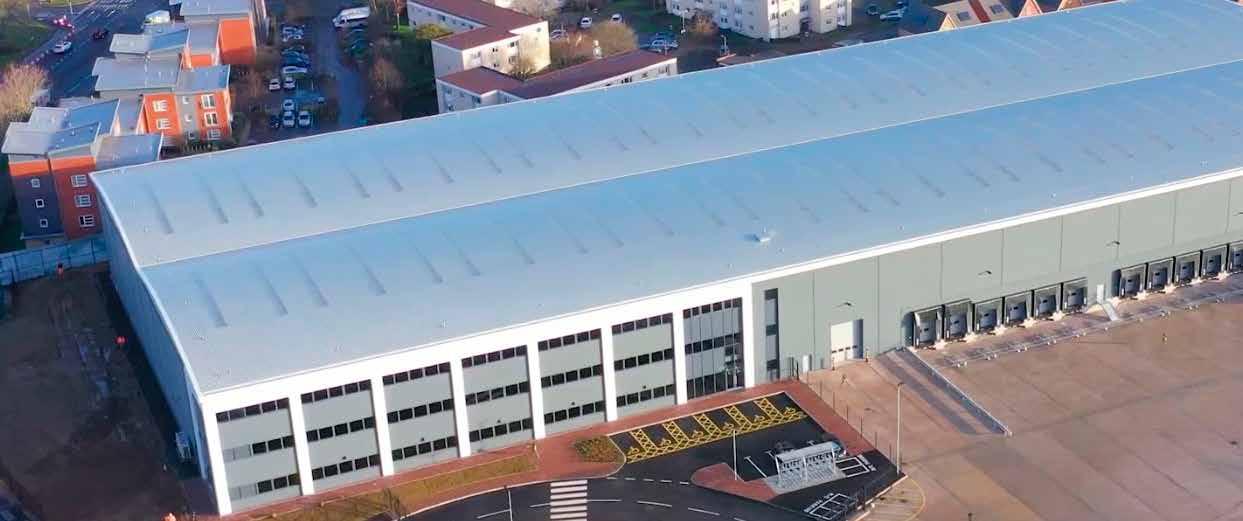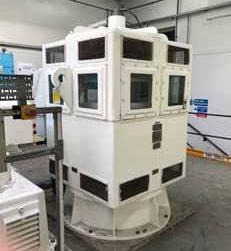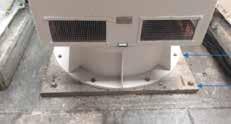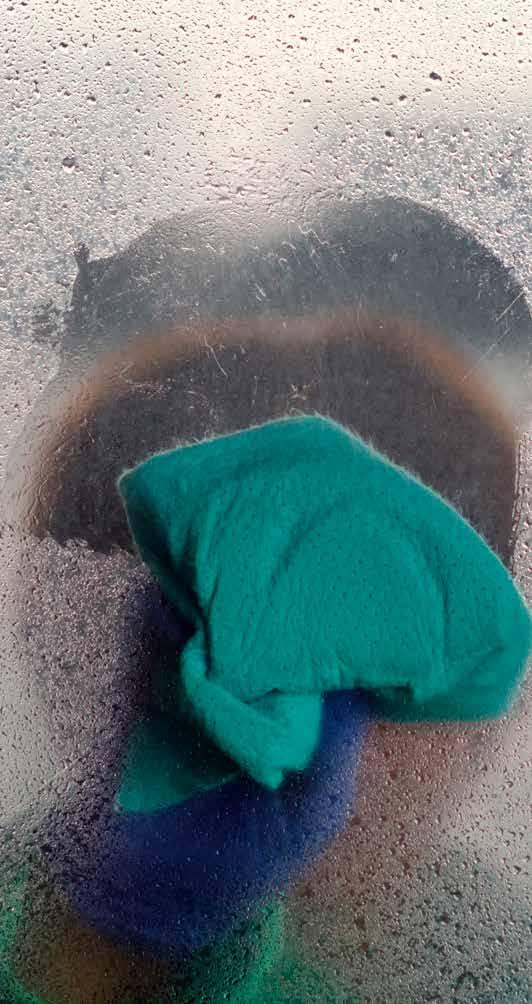
7 minute read
Welcome
Published by ERIKS UK & Ireland Amber Way, Halesowen, West Midlands, B62 8WG
When you think ‘aggressive environment, what industries immediately spring to mind?’ Our guess is industries such as steel, mining and quarrying, oil and gas where the surrounding environment is particularly harsh.
Advertisement
What we often fail to consider is the term aggressive doesn’t necessarily only represent the ardous environment. It should also refer to the materials that are processed or pass through the equipment such as those found in water, wastewater, and chemical settings.
So, with such a wide spectrum, we must take time to consider the individual challenges that each area faces, and how do we best overcome these issues to ensure we reach our maximum potential.
Throughout this edition, we take a closer look at these challenges and highlight a range of solutions to overcome the potential production problems our readers will face.
For ERIKS In Action, we look at how one wastewater company utilised our vibration monitoring capabilities to solve a recurring but unidentified problem with a critical low lift pump, including the long term benefits their decision will provide far into the future.
In Focus, we highlight how companies are being pushed to improve efficiency and environmental impacts, and how the introduction of high efficiency IE4 motors can unlock significant savings as well we support sustainability objectives.
And finally, for Making Industry Work Better, we discuss how choosing the perfect pump for your application is not as simple as comparing price tags.
Last but not least, our debate piece focuses on reshoring manufacturing back to the UK, and if we are ready?
As always, we would love to hear your thoughts on the subjects covered in this issue, so why not share your opinion with us via email or tweeting us at @ERIKS_UK
Richard Ludlam
Editor-in-Chief Email me at: knowhoweditor@eriks.co.uk
The future of the industrial supply chain

FCE - Fulfilment Centre of Expertise
Andy Neville General Manager FCE
Since the first global impacts of the Covid pandemic began to make themselves felt, in 2020, the issue of supply chain disruption has become one of the most widely discussed topics in boardrooms around the world.
Change to Increasing supply chain challenges
Although the impact of Covid has clearly been dramatic and far-reaching, it has in fact been just the latest in a growing list of supply chain challenges facing industrial companies. In recent years, we’ve witnessed trade disputes and tariff wars between major trading nations, political instability in regions that supply vital raw materials and the prolonged uncertainties of Brexit, combined with a rise in populism and nationalism in countries around the world that is driving movements to localise production and employment. The pre-existing dynamics of global trade, however, depend largely on the use of extended supply chains, which exploit the manufacturing resources and labour available in low-cost regions. Although this model was already showing signs of weakness in the years leading up to the outbreak of the pandemic, Covid has exposed its fragility still further, in many cases to breaking point. Clearly, a new approach is required. One that accommodates the business, political, environmental and cultural changes that society has undergone. The challenge for many companies will be to find methods of building resilient and agile supply chains that improve business competitiveness, while delivering the security and certainty that underpin long-term business growth.


A new approach is required
A new approach to supply chain logistics
Our position at the heart of many of today’s global supply chains gives us a unique perspective on the issues facing our customers around the UK and Ireland. From our longstanding experience partnering with companies that range from major automotive suppliers with high volume continuous production operations, to specialised providers of low volume engineering services, we have gained considerable knowledge and insight into the challenges of

ERIKS in action
Peter Mitchell Regional Reliability Manager, North
Unidentified production problems can hide no more
There are many factors that can determine the efficient running of your production line. But when inefficiencies arise, it’s not always straight forward to identify the root cause.
Failures have a variety of root causes – incorrect maintenance activities, lack of regular maintenance schedules, the common issues surrounding ageing and obsolete assets, as well as premature failure due to incorrect installation.
However what we can tell you is, no matter how trivial the problem, the longer it remains unidentified, the more catastrophic and costly it becomes.
So, when one large water treatment works was experiencing unidentified repeated failures on a crucial low lift pump, they called on ERIKS’ expertise to discover the root cause and provide a solution that would empower them with insight and foresight into managing future problems. Enough was enough
Over the past five years, the customer had invested millions of pounds following repeated failures of their assets, many of which dated back to the mid-1970s - not unusual within the water and wastewater industry. However, with costs constantly rising with each repair, as parts were having to be reverse engineered, and SEPA ready to intervene due to serious environmental threats, enough was enough. Now was the time to understand the real root cause.
Costs would have hit a staggering £240,000 with potentially serious damage
Sens(or)ing the problem
The ERIKS Reliability team attended site to inspect the critical low lift pumps in question, before proposing online vibration monitoring as a method to identify the root cause of these recurring failures. 12 wireless Bluetooth sensors were installed across three problematic machines. This enables the team to monitor the condition of the pumps 24/7 remotely. After monitoring key parameters inlcuding only a few weeks of testing, measuring attributes including temperature, velocity,



Wiping the steam clean

ERIKS in action
Martin Gingles Industrial Sealing Manager
Have you ever been driving along, and your car windows begin to steam up? Well the first thing you would do is switch on your air condition system and the problem is resolved. Leave it and your vision is seriously impaired and danger is imminent. It’s the same principle in a manufacturing environment, the more steam, the more your vision will be challenged.
So, when a renowned steel manufacturer was experiencing issues with condensate blurring their blast furnace inspection windows, ERIKS Sealing Technology specialists were on hand to deliver not only a solution to the recurring problem, but one that was far more suitable, and far superior. In the past, the condensation caused by the steam from the blast furnace posed the customer no problems, as the windows used for inspection and could easily be manually wiped clear when required. However, with technology taking significant strides forward, the customer made the decision to introduce a more accurate and automated Tuyere camera system for its inspection process.
The newly installed Tuyere camera system remotely controls 30 cameras strategically positioned around the base of the furnace, that are constantly checking for any signs of abnormalities in the furnace environment, whilst sending back accurate data to regulate optimum operating conditions. Right from the get-go, the problems became apparent. Running into steam
Condensation caused by the escape of steam via leak paths in perished gaskets was obstructing the cameras vision, resulting in the remotely controlled camera being rendered completely useless. The only solution was for an engineer to manually change the relevant gaskets on the corresponding windows, an occurrence which needed repeating 3-5 times a month per camera, requiring valuable engineering time and a reliance on holding an increased stock of replacement gaskets. In short, defeating the object of investment in more modern technology. Originally, the site had specified an extreme high-temperature Vermiculite-based gasket material for the blast furnace in question, believing that this was the best option. But in reality, this type of gasket does not recognise the higher temperatures within the furnace and a far more suitable gasket could have been utilised. Understanding the conditions
Upon investigation as to why the windows were having condensation problems, it was found that, although a Mica-based material was suitable for extreme heat, the Vermiculite-based Mica being used was

